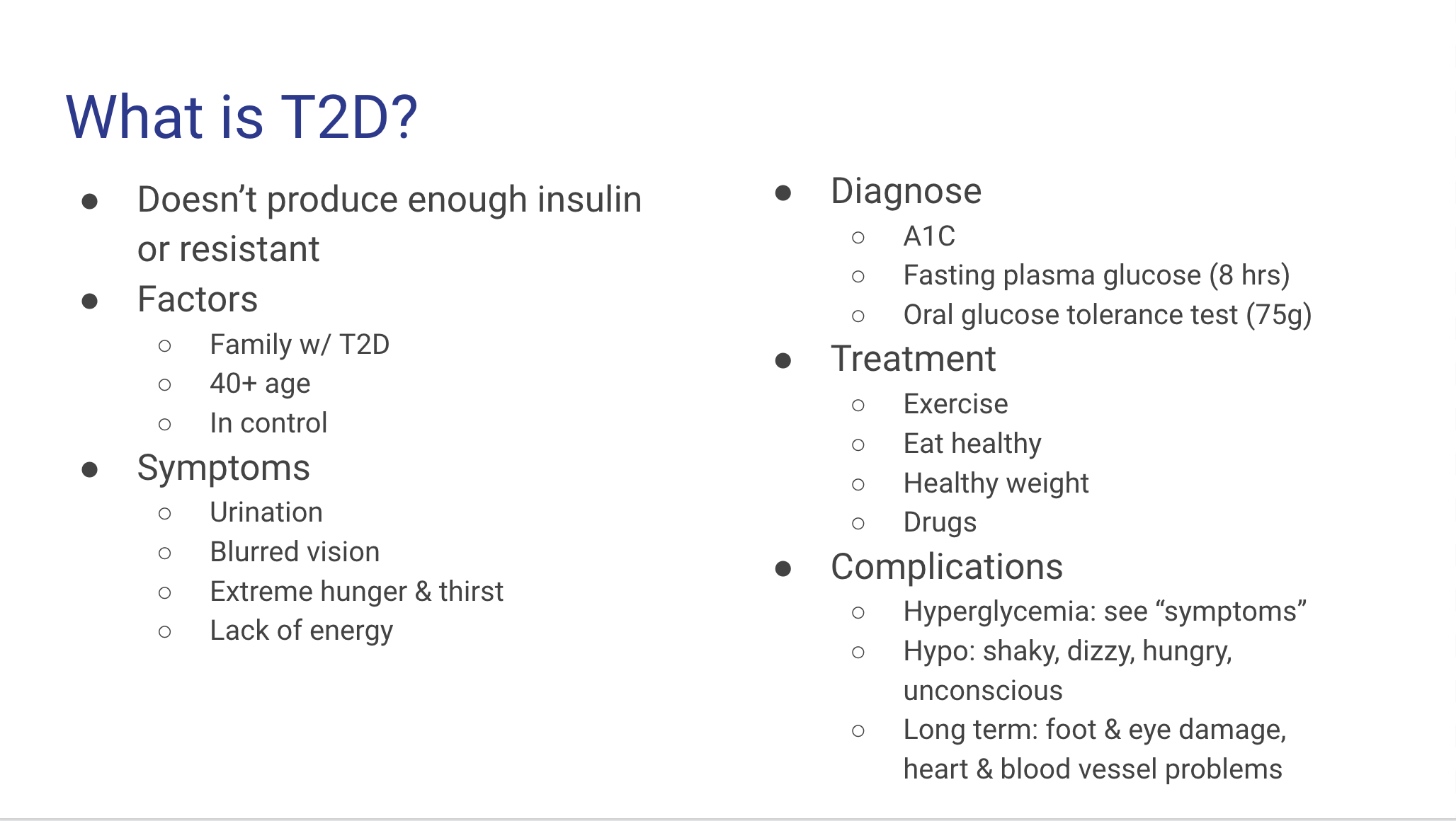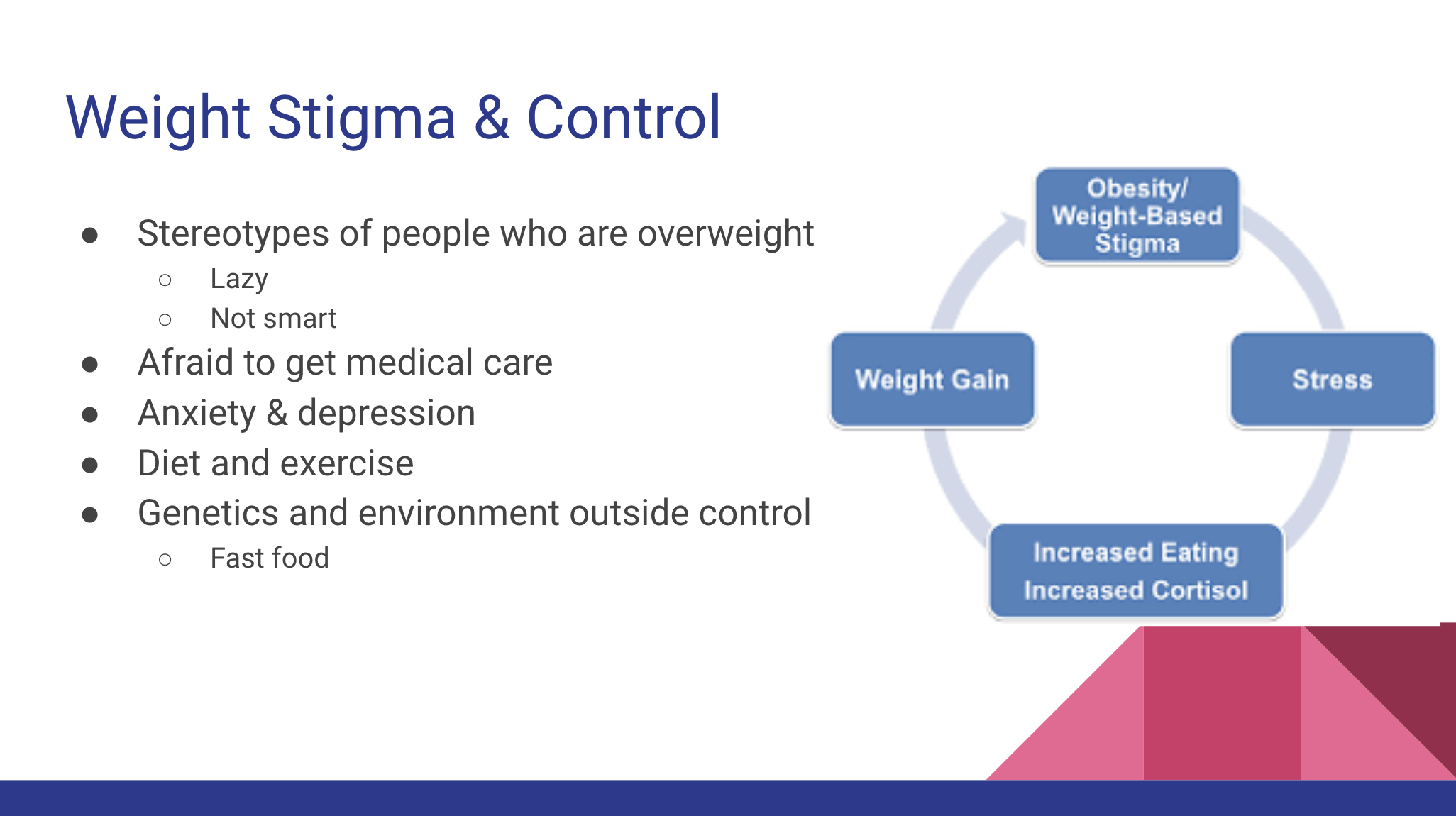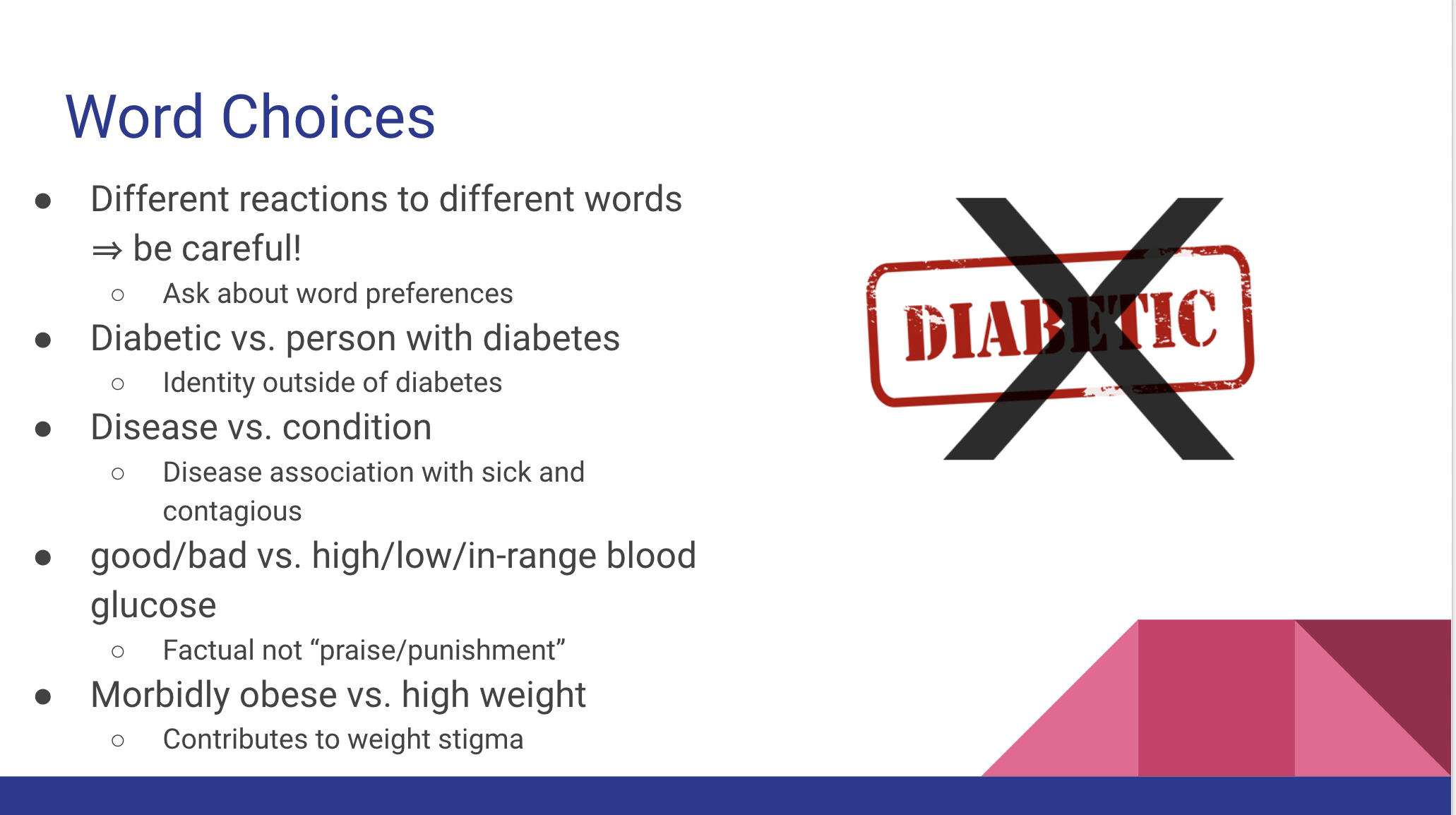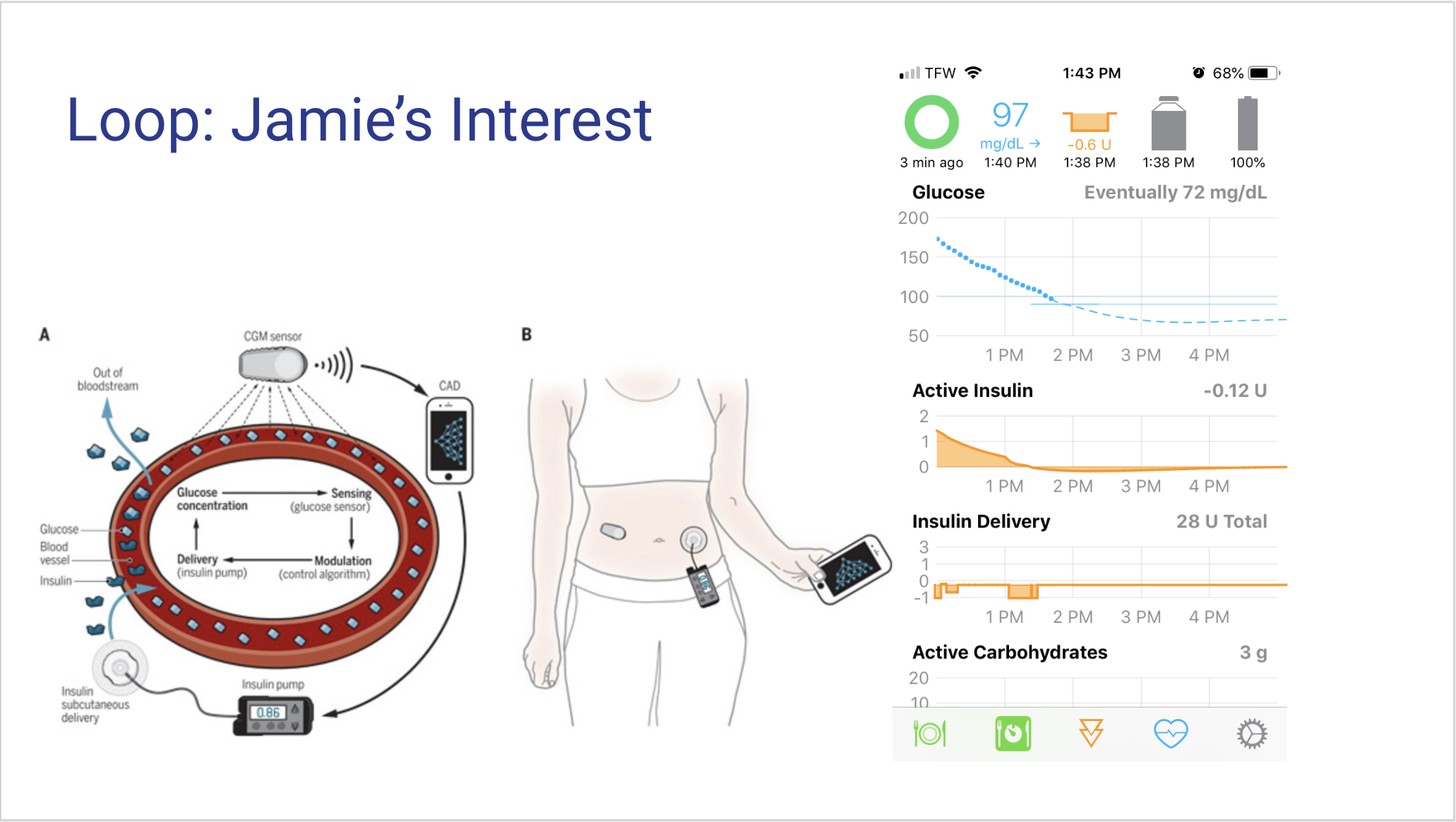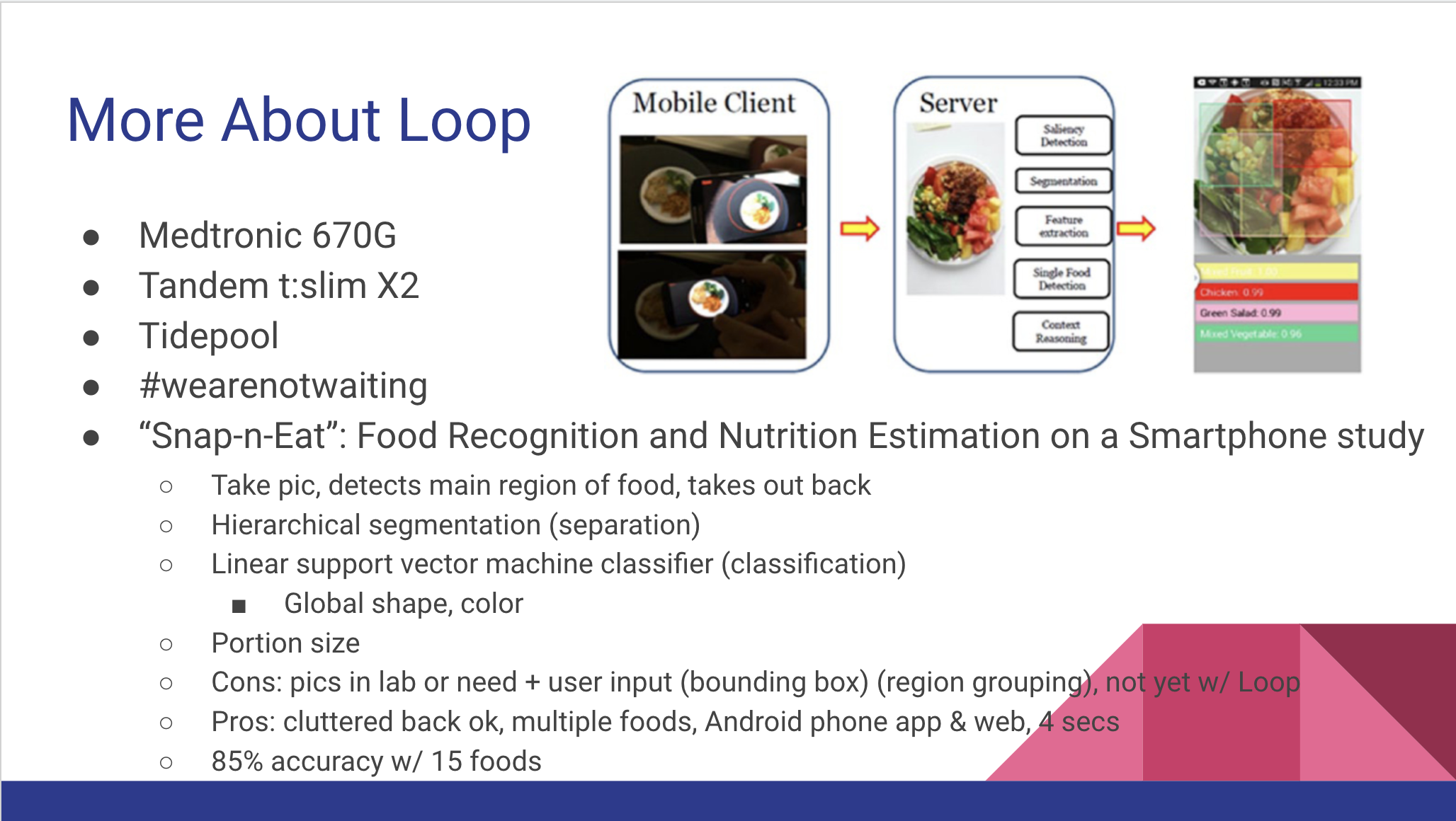Looping with Jamie – Summer 2019
After two years of sharing her experiences with the Medtronic 670G under the title “Diary of an Artificial Pancreas”, 15-year old Jamie Kurtzig has renamed her blog “Looping with Jamie”. In each entry, she will continue to write about her day-to-day experiences living with type 1 diabetes (T1D), now using the DIY app-based system that connects a continuous glucose monitor and an insulin pump to her phone to bring automated insulin adjustments.
June 1: I have been working on this amazing piece by Edmund Severn called Polish Dance for over a year now, and I am so excited to perform it today! I have learned that I need to silence my phone before playing in or watching a performance. Since I use Loop that is run on my phone, I cannot power my phone off. Before each performance, I turn my phone’s volume and ringer off, turn the Dexcom alerts off, and put my phone on Do Not Disturb mode. The trick is to remember to turn all of these alarms back on after the performance.
June 5: I am so excited to switch from the Medtronic pump Loop system to the OmniPod Loop system! I just received my OmniPod training for the regular system without Loop, and I think it is so cool. I love the freedom of not needing to have a tube (so I don’t get caught on anything). I also don’t need to wear a special belt to put my pump in. If you remember my blog post from earlier where I had an accidental insulin overdose, that won’t happen again because there are no buttons on the OmniPod. The insertion is really self-explanatory, and I learned it after one try. However, I have needed to make one change about where I place my set. Since it would be so uncomfortable to sit on the OmniPod that is bigger than previous insertions, I have now adjusted to inserting the Pod on my stomach and arms. Another thing to note about OmniPod Looping is that you need to follow Loop’s instructions for the Pod change inside the Loop app. I accidentally did not do this the first time, and it caused some problems. The good news is that the Loop app tells you exactly what to do! Looping with the OmniPod is pretty similar to Looping with the Medtronic pump, except for there is a new RileyLink and the app needs to be updated. I would recommend Podding to all!
June 8/9: I am so excited to go to the ADA (American Diabetes Association) conference this year in San Francisco! Every year, both of my siblings and I get to have a one-on-one weekend with our dad, and this year, I chose to go to the ADA conference. The very first session I went to was about CRISPR in diabetes. I think that CRISPR is so fascinating and that it could help find the cure for us. The vast majority of the presentations, however, were way above my head. I was pretty frustrated because it was almost like they were speaking another language, but I just realized that I needed to go to sessions about topics I am at least somewhat familiar with, like loop systems.
Next, I went to a talk on the new Tandem Control IQ. The Tandem Control IQ is a new artificial pancreas system where the Dexcom G6 and the Tandem pump work together to adjust basals to maximize time in range. I am so happy that this clinical trial is having such success, and it seems like it will be the best commercial loop system based on their data. They say that people’s blood sugar numbers and diabetes burden were greatly improved. The system is not FDA-approved yet, but the approval will hopefully come soon. The Tandem/Dexcom system seems very similar to my Loop system except for how mine is not FDA-approved and works with OmniPods and old Medtronic pumps instead of Tandem pumps.
I also attended a session run by Stanford’s amazing Dr. Lal and Dr. Buckingham about why the Medtronic 670G was not as popular as they hoped. I thought it was super interesting because I used the system for such a long time when I was part of the clinical trial. They said that peoples’ blood sugars were better while using the 670G, but the system worsened their quality of life because of alarms, calibration needs, getting kicked out of Auto Mode, etc. The Medtronic 670G worked really well for me overall, but it was high-maintenance. I do agree that Loop is a lot more user-friendly. Maybe Medtronic will change these aspects for their next-gen 780G “artificial pancreas”.
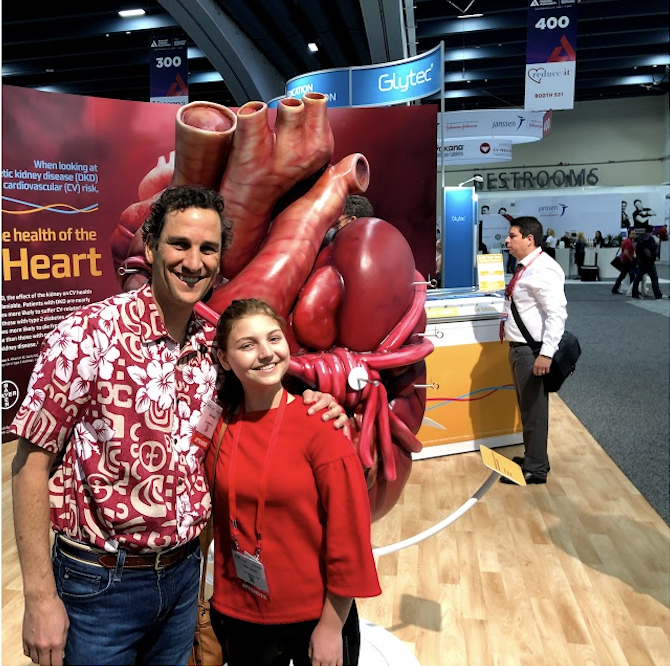
The last highlight was going to a session about diabetes in India. I decided to go to this session because my family and I will be taking this year abroad in India and Ukraine, where my dad has offices (I will explain more about this later). I was horrified when I discovered that it is not uncommon to die of type 1 diabetes in India, especially since about half of all type 1 diabetes cases are undiagnosed. The culture surrounding T1D in India is so much different than in the US because it can cause people with type 1 diabetes to lose jobs and friends. I was shocked when I heard this. Also, 98% of people in Bangalore (the city where we will be living) do not exercise, and although India is home to the most vegetarians in the world, most people still do not get the nutrition they need. When I go to India, I am definitely going to try and improve the lives of those living with type 1 diabetes.
June 15: There is this really interesting challenge for high school students to talk about a STEM-related topic, called the Breakthrough Junior Challenge. Although I did not win (but I will try again next year), I had so much fun making my video about Loop. You can see my video here. Fun fact: My dad’s uncle—Uncle Dan— who researches quantum physics entered the Breakthrough Challenge also—and he won! I am so impressed and inspired by him! Thank you for your amazing work, Uncle Dan!
Late June: I am so excited for my first job ever! I got a job working as a Junior Summer Associate (JSA) at Close Concerns, a company that educates people about diabetes and works closely with diaTribe. For some reason, I thought that we would just be writing articles all summer, but it was so much more than that! Our first major project was doing a teachback about diabetes. I was actually assigned to work on type two diabetes which was interesting since I haven’t spent much time learning about it before. I also researched about the stigma surrounding type 1 diabetes and how we can help stop this by choosing our words carefully. I have personally never liked it when people call me a “diabetic” because diabetes does not make up my whole identity. I prefer to be called a “person with diabetes.” For both types of diabetes, there are so many small word choice adjustments that people can make in order to keep peoples’ feelings safe. You can find more examples of word choice changes in my presentation below.
As another part of the teachbacks, we got to choose anything related to diabetes to research and present on. I was really conflicted going into this teachback about whether I should present about Loop or CRISPR because I did not know if I believed more in a biological or technological cure. After reflecting on this and researching a little bit about both subjects, I believe that a technological cure will come first because we have so much amazing technology already that can be applied to diabetes, like basal rate modulators, watches that can track your steps (and possibly food intake in the future), and Fiasp (fast-acting insulin). I chose to talk about Loop and a system called Snap-n-Eat that counts carbs for you if you take a picture of your food. I thought it would be interesting to learn about the possibility of Loop working with Snap-n-Eat because if Snap-n-Eat was a few carbs off, Loop could make up for it with its basal-rate modulator feature. However, after researching it, I actually do not think this will work very well because Snap-n-Eat can’t see sauces and only works in a lab (as of now).
Another project I worked on was writing Tweets about the Aspen Conference. I learned how hard it is to include so much information in one Tweet that fits under the 280 character limit. I also wrote a few articles that you can check out. Here is my article on Children’s Congress (that I will talk about later). Here is an article I helped write on Apple stores selling One Drop BG meters. Here is an article I helped write on the Medtronic 780G (next-gen of the 670G). .
I also got to help plan College Day, where diaTribe and Close Concerns employees (many of whom are young people in or recently graduated from college) talk about their experiences getting into and navigating college. I know basically nothing about college since I am only a rising sophomore in high school, so this was a fun learning experience for me.
In addition to writing and doing projects for Close Concerns, JSAs also got to hear from incredible women in STEM. From their presentations, I learned that medical school isn’t for everyone, there are many jobs besides clinicians in the medical area, and confident language is important (not saying “I think,” “um,” or “like”). Thank you to these incredible speakers! Another highlight of this job was the amazing people. They were all so friendly and welcoming to me. They inspired me so much, and I think they will and are making the world a better place. Since Close Concerns has a kitchen where everyone makes their own food, I even learned how to cook a little this summer! You can see my reflections on my job in this presentation I made here. Thank you Close Concerns for such an incredible first job! I absolutely loved it!
July 8-10: I am so honored to be a JDRF Children’s Congress delegate this year! I am going to Washington DC to advocate for Congress’s renewal of the SDP (Special Diabetes Program that gives $150 million annually to help find the cure for T1D). Over 160 children and teens living with T1D from all 50 states came to advocate. One highlight was hearing Dr. Kowalski, JDRF’s CEO who also lives with type 1 diabetes, speak and motivate us all to help accomplish JDRF’s mission to find a cure. I also liked hearing from T1D role models about how T1D impacts their work. I was fascinated by how Dr. Anthony Tubbs, an NIH scientist, says that living with type 1 diabetes makes it easier for him to do his research since he is so used to analyzing data and constantly experimenting in both his life with type 1 diabetes and his research. Upon reflecting on his comment, I noticed that T1D has also helped me in school since I need to analyze graphs, examine data, and make hypotheses about what my blood sugar will do when there are manipulated variables. So, I guess this is a silver lining of living with T1D.
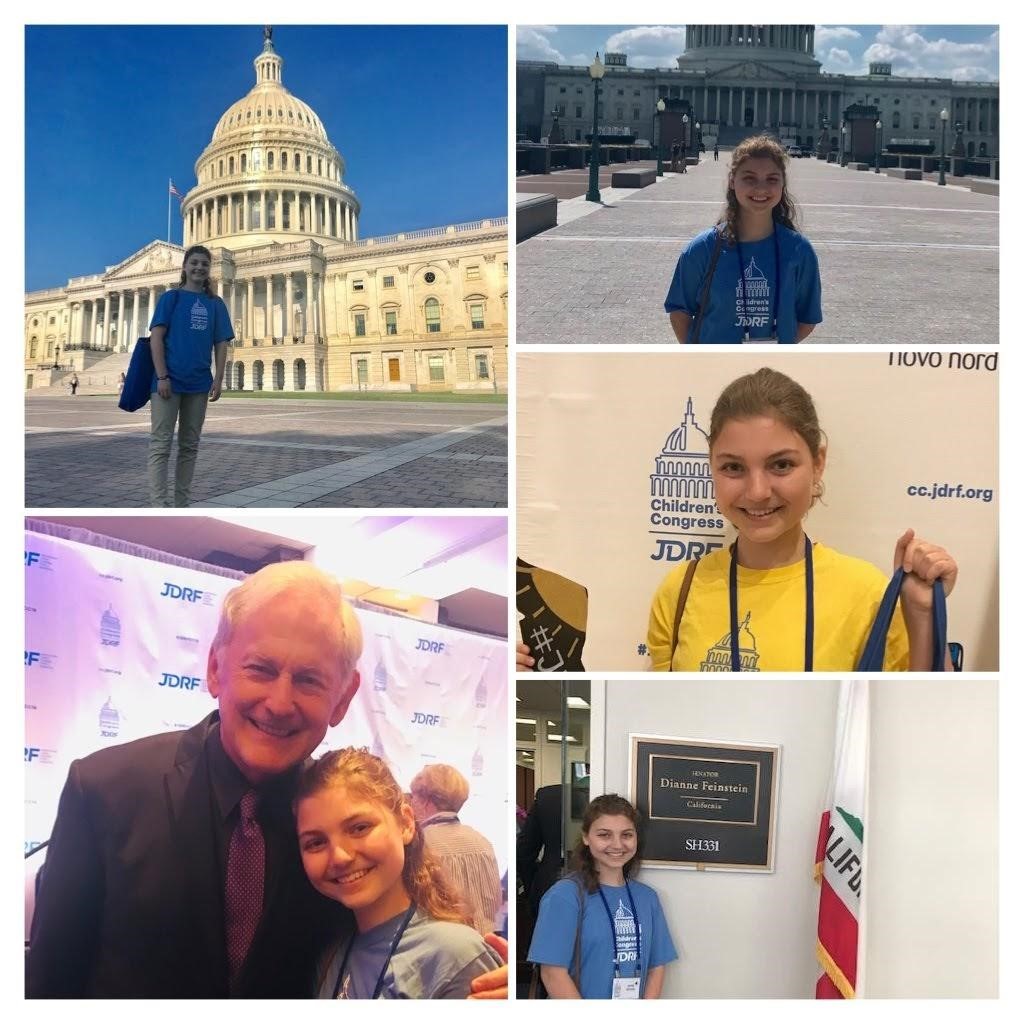
I also loved talking to Victor Garber, an actor in Legally Blonde, my favorite movie ever. My meetings with my congresspeople’s offices were incredible since they were all so supportive of renewing the SDP program. Thank you to Congressman Huffman, Senator Feinstein, and Senator Harris! If you want more information on Children’s Congress, check out my diaTribe article about it here. Right now, Congress has only passed a short-term renewal for the SDP that is good until December 20. Please thank Congress for the support they have shown and tell them that we need a longer-term solution instead of patches for the SDP program. You can take action at this link.
August 6-16: I am having an absolute blast at my first-ever non-diabetes sleepaway camp! It is at Stanford University and run through Stanford Online High School, where I will be going to full-time school this year abroad. Even though I had just started using the OmniPod a few days before, I found it really easy to change by myself and to manage my diabetes in general. At first, I was worried that there wouldn’t be any gluten-free food, but Stanford was amazing at providing gluten-free food for me. Thank you!
My first weeklong course was about society and multiculturalism, a course I thought would be interesting since I will be living in 2 completely different societies than my own (Ukraine and India). My favorite part was discussing political issues, like the refugee crisis and the college admissions scandal, both of which are awful.
My second course was all about scavenger hunts, and I got to make a whole scavenger hunt with my team for other teams to do! I enjoyed watching other teams lip sync to a song and get in one of Stanford’s beautiful fountains (fountain hopping is popular at Stanford). However, my absolute favorite thing was walking around in my free time to see the Stanford campus. I went to the top of Hoover Tower, spent hours reading in the incredible Green library, walked around the lake (although it doesn’t have any water in it!), walked a labyrinth, and hopped in tons of fountains. I really hope that I can get into Stanford one day—although I know it is a longshot! I would love to go to school at such a beautiful, forward-thinking, innovative, supportive, and creative place!
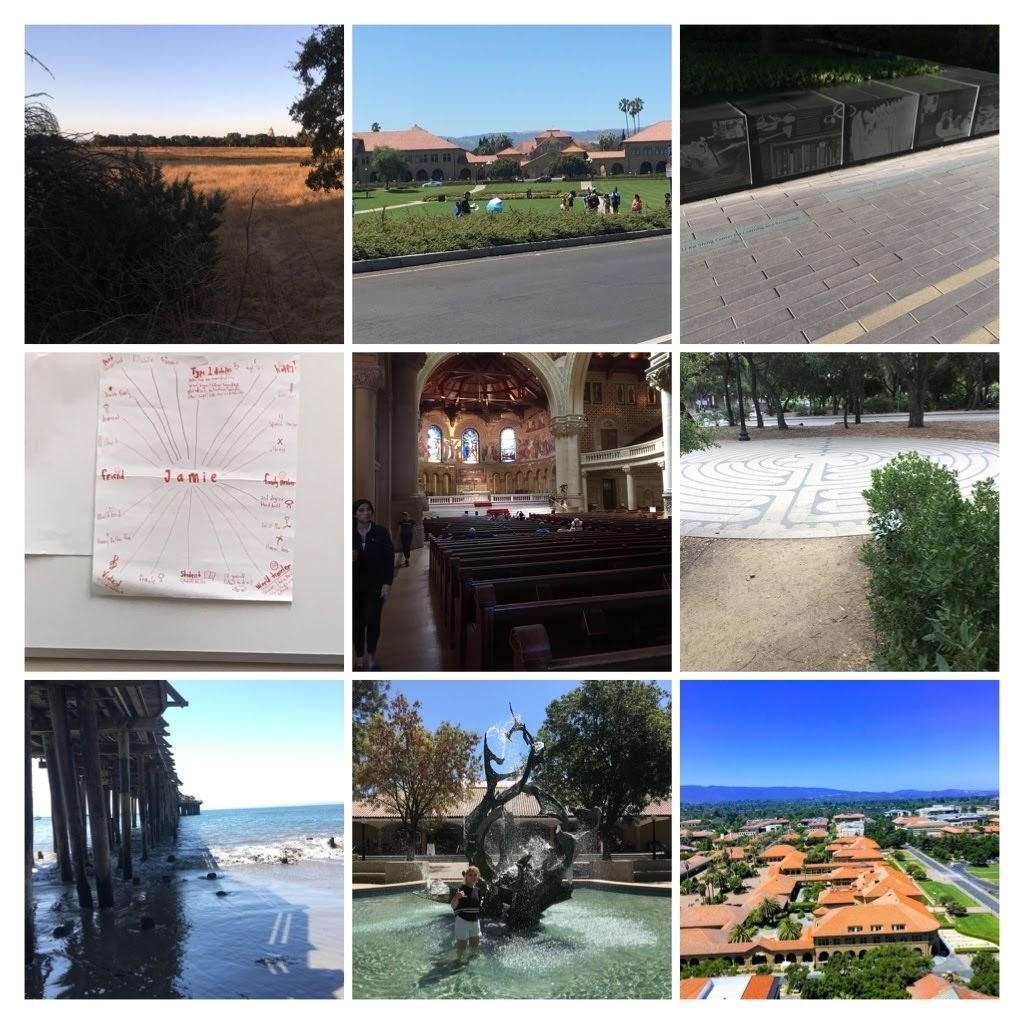
August 16: This summer, I have also been so lucky to be doing some work with Dr. Scheinker of SURF (Systems Utilization Research For Stanford Medicine) on comparing different CGMs. Here is a presentation that we made that compiles information about Dexcom G6, Dexcom G5, Abbott Libre, Medtronic Guardian 3, and Senseonics Eversense. Thank you so much to Dr. Scheinker, Josh, and Andrew for helping me with this presentation and for listening to me give it! You can find more information about SURF and all of the cool stuff we are doing here. Please look at the website to learn more about CGMs and other ways that technology, engineering, and math can be applied to medicine. You can also learn about SURF’s work with CGMs here. It is a great organization that is doing so much amazing work from maximizing Stanford hospital’s efficiency to automating target-based care.
August 21: This was certainly an unusual first day of school. It was my first day of full-time school at Stanford Online High School. First of all, I woke up 5 minutes before my first class and wore pajama pants (since no one can see your pants at an online school)! I didn’t even have to leave my room. This year, I am taking Precalculus, Chemistry, English, World History (from Alexander the Great to NATO), and doing a homeroom focusing on technology. This online high school is kind of like Facetime: I can see my teacher and classmates live, the teacher can upload slides that we can write on digitally, and there is a chat where we can put questions and comments. I think it’s super cool! I think that Chemistry will be really tricky for me since I need to take lab materials (including glass beakers and reactive powders) all the way across the world, through airports and more. For Spanish, there wasn’t a class that worked (since the time change from where I live in California is 10 hours behind Ukraine and 12.5 hours behind India) at a reasonable time for me. So, I am doing Spanish at another (not live) online school called OneSchoolhouse. I am excited about this new learning experience!
With Gratitude and Aloha,
Jamie
